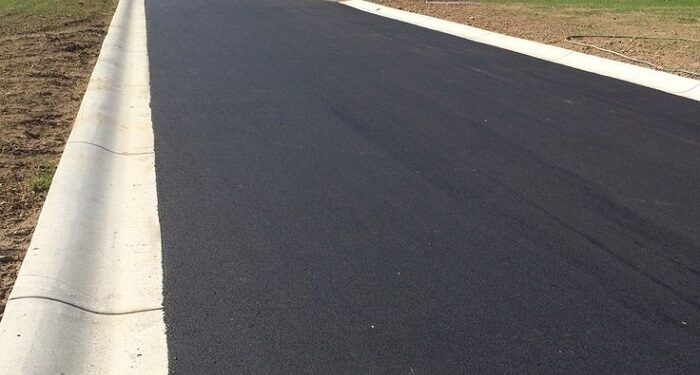Tarmac resurfacing is a vital process in maintaining the integrity, functionality, and safety of roads, driveways, and other paved surfaces. While often taken for granted, smooth, well-maintained tarmac is essential for efficient transportation and the overall aesthetic of public and private spaces. Without regular resurfacing, even the best-built roads can succumb to wear and tear, resulting in hazards, inefficiencies, and costly repairs.
At its core, tarmac resurfacing involves the application of a new layer of asphalt over an existing surface. This process restores the smoothness and strength of the pavement, addressing issues such as cracks, potholes, and general degradation caused by time and usage. It is a cost-effective solution that extends the life of paved surfaces while enhancing their appearance and functionality.
The importance of tarmac resurfacing lies in its ability to address the natural deterioration of roads. Over time, the combined effects of traffic, weather, and environmental factors take their toll on asphalt surfaces. Heavy vehicles, temperature fluctuations, and water infiltration can weaken the underlying structure, leading to cracks, ruts, and potholes. If left unaddressed, these issues can escalate, compromising safety and requiring more extensive and expensive repairs. Resurfacing is an efficient way to prevent such scenarios, ensuring that the surface remains strong, durable, and safe for use.
The resurfacing process typically begins with a thorough assessment of the existing surface. Professionals examine the area for signs of damage, such as cracking, crumbling edges, or drainage issues, to determine the extent of repairs needed. This evaluation helps to identify whether resurfacing alone will suffice or if more extensive measures, such as full-depth reconstruction, are required.
Once the assessment is complete, the surface is prepared for resurfacing. This preparation may include cleaning the area to remove dirt and debris, repairing significant cracks or potholes, and leveling uneven sections. In some cases, a process called milling is used to remove the top layer of damaged asphalt, creating a clean, even base for the new tarmac. Proper preparation is crucial to ensure that the new layer adheres effectively and lasts for years to come.
The application of new tarmac is the heart of the resurfacing process. A fresh layer of asphalt is spread over the prepared surface and compacted using heavy machinery to create a smooth and durable finish. This step not only restores the appearance of the pavement but also reinforces its structural integrity, making it better equipped to withstand future wear and tear.
Beyond addressing immediate damage, tarmac resurfacing offers several long-term benefits. One of the most significant advantages is improved safety. Uneven or deteriorated surfaces can pose a serious risk to drivers, cyclists, and pedestrians, leading to accidents and injuries. Resurfacing eliminates these hazards, providing a smooth, even surface that enhances traction and reduces the likelihood of incidents.
Another key benefit is enhanced visual appeal. Cracked and faded tarmac can detract from the overall appearance of a property or public space. Resurfacing rejuvenates the surface, giving it a fresh, clean look that improves curb appeal and creates a positive impression. This is particularly important for commercial properties, where the condition of parking lots and access roads can influence customer perceptions.
Tarmac resurfacing also contributes to cost savings over time. While it requires an upfront investment, resurfacing is significantly less expensive than allowing a surface to deteriorate to the point of requiring complete reconstruction. Regular maintenance and resurfacing help to prolong the life of the pavement, reducing the need for more extensive repairs and minimising long-term expenses.
In addition to its practical benefits, tarmac resurfacing contractor plays a role in environmental sustainability. Advances in asphalt technology have led to the development of eco-friendly materials and processes. Recycled asphalt is often used in resurfacing projects, reducing waste and conserving natural resources. Furthermore, the improved durability of modern asphalt mixtures means that surfaces require less frequent repairs, resulting in a smaller environmental footprint over time.
The versatility of tarmac resurfacing makes it suitable for a wide range of applications. From busy highways and urban streets to private driveways and parking lots, resurfacing provides a reliable solution for maintaining and enhancing paved surfaces. Its adaptability ensures that it can meet the unique needs of different environments, whether the goal is to withstand heavy traffic, improve drainage, or simply refresh the appearance of a property.
In conclusion, tarmac resurfacing is a critical aspect of infrastructure maintenance that offers numerous benefits. By addressing surface damage, improving safety, enhancing aesthetics, and reducing long-term costs, resurfacing supports the functionality and longevity of roads and other paved areas. Its importance extends beyond practicality, contributing to the sustainability and overall quality of modern transportation networks. As we continue to rely on tarmac surfaces for daily life, regular resurfacing remains a key investment in ensuring their continued performance and appeal.



















